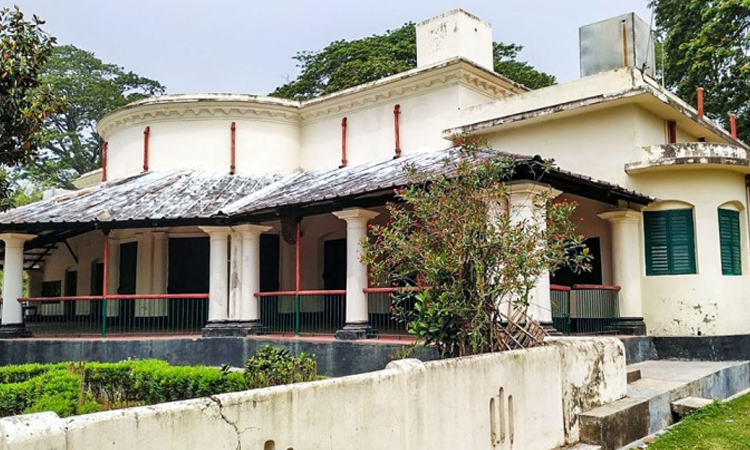News Flash

By Dilruba Khatun
MEHERPUR, Oct 12, 2025 (BSS) - Many memories of British rule remain etched in Bengal's history. One such historic landmark is the Amjhupi Nilkuthi (indigo factory) in Meherpur, built through the blood and labor of the people of Bengal.
It stands not only as an administrative building but also as a living testament to the struggles, deprivation, and aspirations for freedom of the people of Bengal.
The Amjhupi Nilkuthi still survives. Every year, a sapling of an indigo plant is planted near the main building in remembrance.
After the British period, the management of the factory was entrusted to the Midnapore Company. Following the abolition of the zamindari system, responsibility passed to the district administration, and later to the district council and now the upazila administration.
The main building is currently under the supervision of the Department of Archaeology. In 2015, the Tourism Ministry took responsibility for the site. To maintain the main building, the Department of Archaeology appointed five Ansar members and five caretakers.
However, the lack of a boundary wall around the factory often exposes tourists to animal waste, discouraging visitors.
The painful history of British rule:
By the mid-19th century, British administration had begun to dominate Bengal's villages and towns. The Amjhupi Nilkuthi in Meherpur was built to demonstrate British power. British officials such as Simpson and Ferguson resided here while exploiting the common people.
The factory witnessed oppression, exploitation, and administrative cruelty. At that time, the factory's nayeb bari (rent collector's house) served as key administrative centers, which are now largely destroyed.
After the fall of the British, the Midnapore landlords took over, and following the abolition of zamindari on December 17, 1951, responsibility transferred to the district administration.
Later, the district council and finally the upazila administration oversaw the factory's maintenance.
Recognition as a tourist site and renovation:
On May 13, 1978, Amjhupi Nilkuthi was declared a tourist site during a Khulna Division session. Following this, the government initiated a Tk 18 lakh project for remodeling. Today, the main building retains its aesthetic appeal.
The construction of the Amjhupi Nilkuthi is estimated to have occurred between 1800 and 1815, during the peak of the East India Company's indigo trade. Merchants used the factory as a hub for overseeing indigo cultivation and production.
Though the last Nawab of Bengal fell in 1757, the factory's walls carry misleading narratives about conspiracies against him fifty years later.
Indigo sapling is still planted yearly near the main building as a symbolic remembrance.
Decaying in course of time and threats for extinction:
The factory still stands along the bank of Kajla River. Yet, many important structures are in ruins. Trees are dying, impacting the natural beauty of the area.
Although the main building looks beautiful after remodeling, the broader site still requires significant conservation efforts. Tourists continue to visit, with the upazila administration charging Tk 20 as entry fee.
State of other indigo factories in Meherpur:
Other factories in Meherpur, such as the Bhatpara Factory in Gangni Upazila, are in dire condition due to lack of maintenance. Doors and windows have been stolen, and bricks are being removed. Built in 1859 on 27 acres, these structures are now at risk.
Indigo factories in Tetulbaria, Bhabanipur, Bamundi, Ratanpur, Gangni, and other villages have already been destroyed. These are not just buildings but remnants of Bengal's history. Without active conservation, this history will silently disappear.
Responsibility towards history and heritage:
The Amjhupi Nilkuthi and other indigo factories in Meherpur are more than old buildings-they embody Bengal's history of exploitation, struggle, and the fight for independence. Preserving them for future generations is the demand of time.
Historian Tojamal Azam of Meherpur told BSS that government initiatives, local administrative supervision, and public awareness are all necessary to save these historic landmarks. Otherwise, they will exist only in books and documents, never coming alive again, he mentioned.
He said conserving sites like the Amjhupi Nilkhuthi means preserving the heritage of the nation, where the struggles of Bengal's people are etched, serving as both a lesson and a source of pride for future generations.
Meherpur Sadar Upazila Nirbahi Officer Khairul Islam told BSS that plans have been drafted to address the lack of a boundary wall and other issues, and works will begin soon.